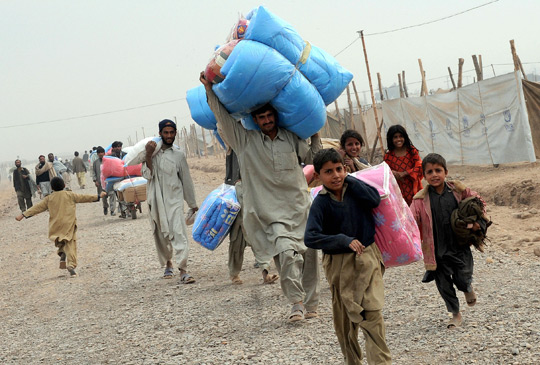
Escalating Tensions: Pakistan's Directive on Afghan Immigrants and the Struggle Against Extremism.
In response to the escalating violence attributed to Afghan nationals within Pakistan, the Pakistani government issued a directive ordering all 1.73 million illegal immigrants to leave the country voluntarily or face deportation. This move comes amidst a backdrop of strained relations between Pakistan and Afghanistan, exacerbated by the recent surge in violence perpetuated by groups like the Tehreek-e-Taliban Pakistan (TTP).
Since the Soviet invasion of Kabul in 1979, Pakistan has been a haven for Afghan refugees, hosting the largest number of displaced individuals. However, the recent wave of suicide bombings, with 14 out of 24 incidents involving Afghan nationals, has strained the already delicate relationship between the two nations.
The TTP, an umbrella organization of hardline Sunni Islamist militants operating within Pakistan, has intensified its campaign against the Pakistani government, aiming to impose its interpretation of Islamic law and overthrow the established order. The revocation of a ceasefire with the government has further destabilized the region, leading to a surge in violence.
According to Islamabad, the TTP utilizes Afghan territory as a base for planning attacks and training militants, contributing to the insecurity within Pakistan. Recent suicide attacks targeting religious groups, resulting in the deaths of at least 57 people, have heightened concerns about the group's capabilities and intentions.
Sarfraz Bugti, the interior minister, has pointed to evidence linking Afghan nationals to these attacks, despite denials from the TTP. The identification of one of the suicide bombers as an Afghan citizen has added fuel to the fire, prompting Islamabad to take decisive action to address the growing security threats.
The directive to expel illegal immigrants reflects Pakistan's determination to mitigate the risks posed by external elements fueling violence within its borders. By targeting Afghan nationals, Islamabad aims to disrupt the logistical and ideological support networks that sustain militant groups like the TTP.
However, this move risks exacerbating tensions between Pakistan and Afghanistan, already strained by historical animosities and competing strategic interests. The forced deportation of Afghan refugees could further destabilize the region, exacerbating humanitarian crises and undermining efforts towards regional cooperation and stability.
Moreover, the directive raises concerns about the treatment of vulnerable populations, including refugees fleeing conflict and persecution. Forced repatriation without adequate safeguards could violate international humanitarian norms and exacerbate the suffering of already marginalized communities.
In addressing the root causes of extremism and violence, Pakistan must adopt a comprehensive approach that addresses socioeconomic grievances, strengthens border security, and promotes dialogue and reconciliation. Targeted efforts to disrupt militant networks and address radicalization are essential, but they must be balanced with respect for human rights and the rule of law.
Furthermore, cooperation between Pakistan and Afghanistan is indispensable in combating transnational threats and fostering regional peace and stability. Both countries must work together to address shared security challenges, including border management, counterterrorism, and refugee resettlement.
In conclusion, Pakistan's directive to expel illegal Afghan immigrants reflects the gravity of the security situation within the country, but it also underscores the complexities and challenges of addressing extremism and violence. A holistic approach that prioritizes dialogue, cooperation, and respect for human rights is essential to effectively tackle the root causes of conflict and promote lasting peace in the region.